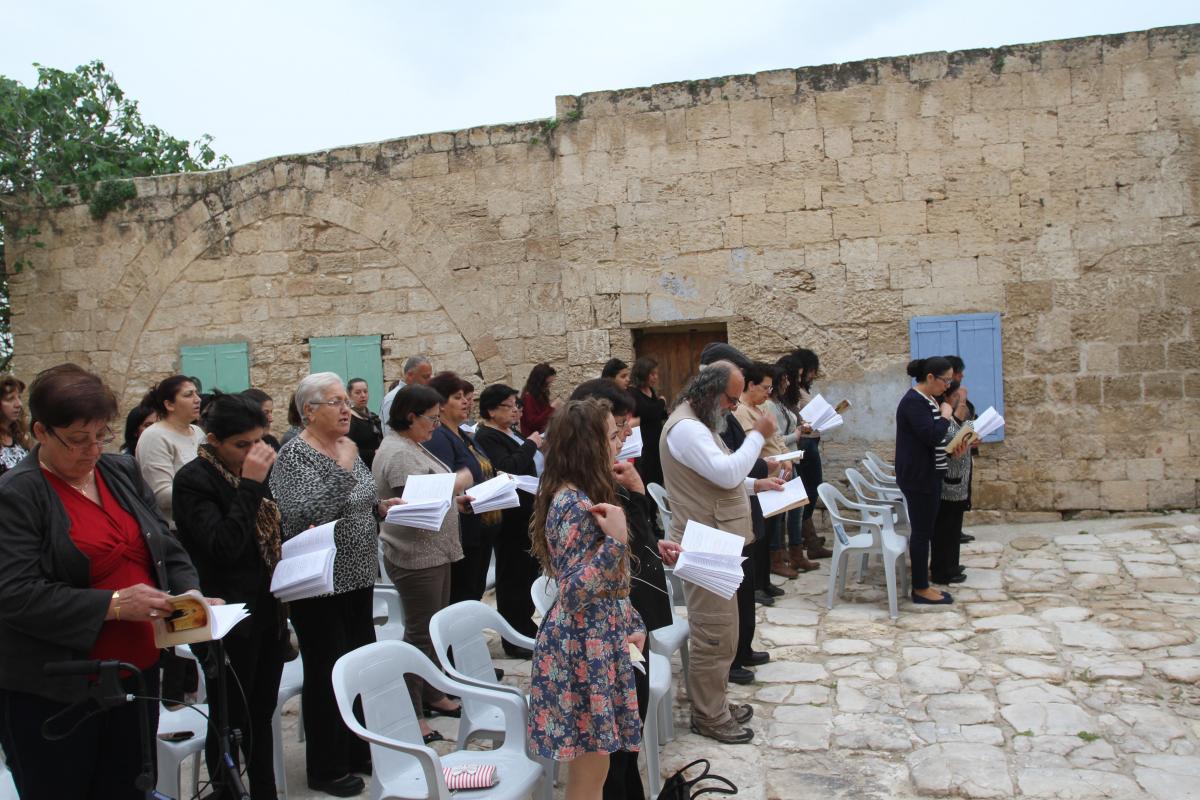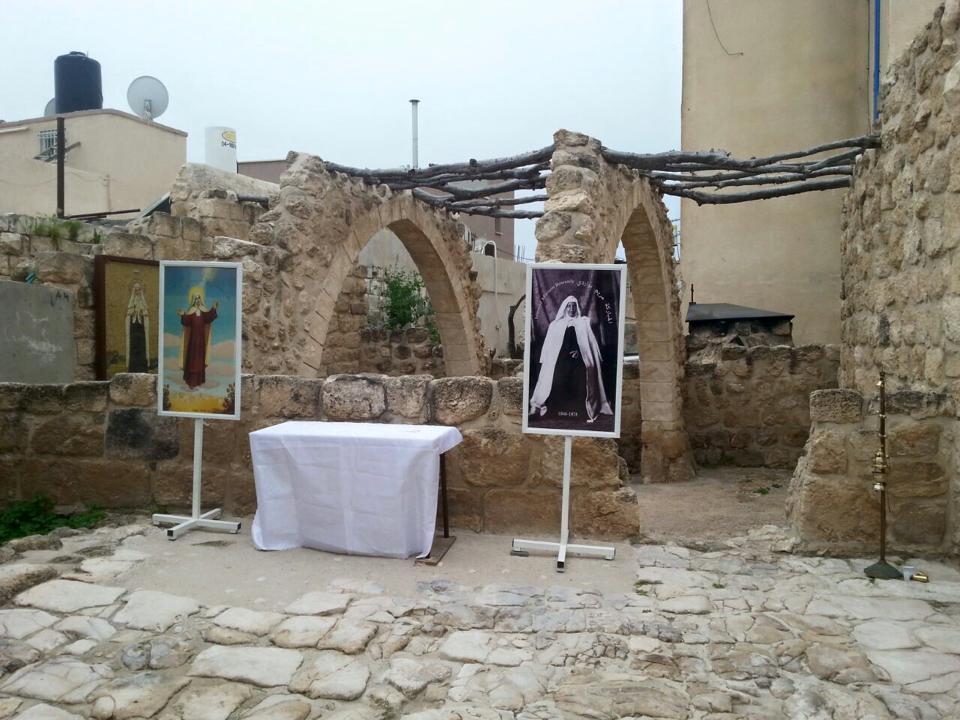Ethnography in Ibbelin March 28, 2015
Ethnography of an evening prayer at the site of Mariam Bouardy
March 28, 2015
On Wednesday (March 25, 2015) I arrived at Ibbelin with Omer, our new RA who will be working on some of the sites in Jerusalem. To his credit I should say that this was entirely his initiative as he wanted to learn more on other sites of our project and was undeterred about coming here to the Galilee. So, we started our short excursion at the Lababidi mosque in Acre where we found a new marquee that was just recently added to the northern perimeter of the mosque. As we stood there and discussed the site a smiling man approached us and in the ensuing conversation he told us he originates from Nazareth but as he works in Acre he comes here to pray sometime. He prayed by the newly constructed mihrab that was built outside the mosque on its entrance side.

The New Marquee at the Lababidi Mosque
We drove to Ibbelin and climbed the meandering road to the historical center of the village. As we preformed our own ‘pilgrimage’ to the constantly changing site of Mariam Baourdy and talked by the icon that was added last month Assad Da’ud who is the main protagonist in the current shaping of the site arrived. We learned from him that the local Catholic priest, Michelle Tu’ama has initiated a weekly prayer at the site starting this coming Saturday March 28, 2015. This is done in anticipation of the Pope’s much awaited declaration of Mariam as saint this coming May in Rome (http://en.radiovaticana.va/news/2015/02/14/consistory_three_new_canonisa...). This is why I set my sites on Saturday and arrived at 1650 to the site of Mariam in Ibbelin.
The first thing I noticed was the attendance of two priests – the Catholic one and the Greek-Orthodox standing together and although the Catholic (Father Michelle) was the one conducting and leading the ceremony time and again he motioned his colleague to take the lead and read/sing the prayers.

The congregation attending the first ever prayer at the site was mostly constructed of women from the village. Approximately fifty people attended out of which less than 10 were men.

A shining new booklet of prayers just out of the print was handed to each of the devotees by volunteers who helped the priest during the ceremony. Among the attendee were also three members of the Greek-Orthodox local community council while the members of the Catholic council were noticeably absent. A Christian member of the Catholic community who is also very active in the on-going works at the site lamented to me and expressed his opinion about the shameful and distasteful aspects of this act and demanded no one in particular for answers. Later I discovered this had to do with an internal strife among leading members of the community and the priest regarding the location of the ceremony celebrating Mariam’s sainthood as we are nearing the up-coming canonization of her by the Pope.

The ceremony which included prayers and chants was conducted in a westward direction and not in the common Christian fashion in the region (eastwardly) mainly due to the micro-geography of the locality of the shrine. Praying east would mean facing the backend of one of the neighbor’s houses while in the current direction the congregation was looking at the emerging shrine of Mariam. Two pictures of Mariam were hanged on special hangers facing the congregation which signified also the rudimentary altar were the priests lead the ceremony. As the soothing sound of the famous chant Kyrie Eleison was filling the air drops of gentle rain started dropping on us but the audience bode well with it and kept on singing. After fifty minutes the ceremony ended with a very moving speech by Father Michelle who made a special point of acknowledging the reverence to Mariam by both Christian communities of Ibbelin and by thanking his ‘brother’ (Arabic – al-Akh) Father Saba Khaj and the other Greek-Orthodox members who came to pray with ‘us’ and praised excessively the virtues of Mariam and also thanked Assad for his relentless efforts over the last few years of reconstructing the site. Assad began a single man renovation and conservation operation at the site where the saint is supposed to be born. Light refreshments were passed between the small community that gathered for the ceremony and while some of the people went to pray and kiss the new engraved picture of Mariam, an act that was followed with donating money to the small box near it

A view of the yard next to Mariam’s room during the prayer – courtesy of Assad Daud.
The most remarkable point for me was perhaps the two priests hugging and blessing each other before parting ways as each of them was to go to a different church to conduct the evening prayers separately. Surely, this has to do with the current predicament of both communities vis-à-vis the growing Muslim community in the village, the charismatic stage of the site which enables new modes of action and is still flexible and ‘un-canonized’ yet. As we embark soon on a new project of looking at shared religious places in the region the ceremony conducted here surely merits further discussion and further ethnographies.
Nimrod Luz